Hula Hooping Draws A Big Crowd
Top Hoopers Around The World
Some of the top hula hoopers around the world have gained recognition for their exceptional skills and contributions to the art form. Marawa Ibrahim, known as “Marawa the Amazing,” is celebrated for her stunning performances and holds multiple world records, including for spinning the most hoops simultaneously. Another prominent figure is Christina D. Collins, or Hoop Girl, who promotes hoop dance as a fun fitness activity through her online tutorials and classes.
Most Popular Prizes For Hooping Competitions
In a Hula Hooper competition, prizes can vary widely depending on the event’s scale and sponsorship. Here are some popular and enticing prize ideas:
- Cash Prizes: Offering cash awards for top performers can be highly motivating and appreciated by competitors.
- Gift Cards: Cards to local fitness stores, health food cafes, or sports apparel retailers are practical and well-received.
- Hooping Equipment: High-quality hula hoops, grip tape, or customization options can be great prizes for hula hoop enthusiasts.
- Workshop Vouchers: Offering free classes or workshops with renowned hula hoop instructors can be an excellent way for winners to enhance their skills.
- Fitness Gear: Branded workout clothing, accessories, or fitness trackers can appeal to the health-conscious crowd.
- Trophies or Medals: Custom name cutout awards recognizing different categories, such as best performance, creativity, or style, add a nice touch to the competition.
- Event Merchandise: Exclusive event T-shirts, tote bags, or other branded items can serve as mementos for participants.
- Subscriptions: Memberships to online fitness platforms or magazines focused on dance or fitness can be valuable.
- Health and Wellness Products: Items like yoga mats, foam rollers, or nutritional supplements can promote a healthy lifestyle.
- Local Experiences: Vouchers for local attractions or activities, such as dance classes or fitness retreats, can offer unique experiences.
Offering a mix of these prizes can make the competition more exciting and encourage participation!
Popular Hooping Competitions
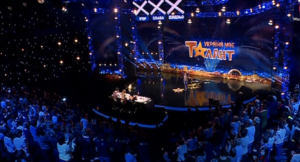 Some of the top hula hooping competitions celebrate the art and skill of hoop dance in exciting ways. The Hula Hoop Championships, often held at various festivals, feature talented hoopers showcasing their abilities in categories like solo performances and group routines. World Hoop Day events take place globally, with many cities hosting competitions that encourage community participation and promote the joy of hoop dance. HoopCon is a popular annual convention that gathers hoopers from around the world for workshops, performances, and competitions, highlighting diverse styles and techniques.
Some of the top hula hooping competitions celebrate the art and skill of hoop dance in exciting ways. The Hula Hoop Championships, often held at various festivals, feature talented hoopers showcasing their abilities in categories like solo performances and group routines. World Hoop Day events take place globally, with many cities hosting competitions that encourage community participation and promote the joy of hoop dance. HoopCon is a popular annual convention that gathers hoopers from around the world for workshops, performances, and competitions, highlighting diverse styles and techniques.
 The National Hoop Dance Championships focus on Indigenous hoop dancers, celebrating their cultural heritage through intricate performances that blend storytelling with hooping. In Europe, the European Hoop Championships attract top hoopers and feature multiple performance categories, reflecting the continent’s growing hoop community. Lastly, the Hoop Dance World Championships, often part of larger dance festivals, highlight the best hoop dancers globally, emphasizing creativity, technique, and entertainment value. These competitions not only showcase incredible talent but also foster community and encourage the growth of hoop dancing as a vibrant art form.
The National Hoop Dance Championships focus on Indigenous hoop dancers, celebrating their cultural heritage through intricate performances that blend storytelling with hooping. In Europe, the European Hoop Championships attract top hoopers and feature multiple performance categories, reflecting the continent’s growing hoop community. Lastly, the Hoop Dance World Championships, often part of larger dance festivals, highlight the best hoop dancers globally, emphasizing creativity, technique, and entertainment value. These competitions not only showcase incredible talent but also foster community and encourage the growth of hoop dancing as a vibrant art form.

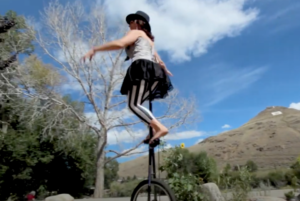 Participants at the Salida Colorado Circus School benefit from expert guidance that emphasizes both foundational skills and advanced tricks, ensuring a comprehensive learning experience. The school’s setting, nestled in the picturesque town of Salida, adds an extra layer of charm and inspiration, with its scenic landscapes complementing the fluid, rhythmic nature of hula hooping. In addition to honing their physical skills, students often find a sense of community and camaraderie within the school, as they share their passion for circus arts and collaborate in performances and workshops.
Participants at the Salida Colorado Circus School benefit from expert guidance that emphasizes both foundational skills and advanced tricks, ensuring a comprehensive learning experience. The school’s setting, nestled in the picturesque town of Salida, adds an extra layer of charm and inspiration, with its scenic landscapes complementing the fluid, rhythmic nature of hula hooping. In addition to honing their physical skills, students often find a sense of community and camaraderie within the school, as they share their passion for circus arts and collaborate in performances and workshops. Major circuses often elevate hula hooping to a breathtaking art form by pushing the boundaries of what can be achieved with this seemingly simple prop. Performers frequently employ a variety of techniques, including spinning, juggling, and incorporating the hoops into acrobatic stunts. The inclusion of hula hooping in these grand productions underscores its versatility and appeal, as it seamlessly integrates into the broader tapestry of circus acts. The vibrant energy and skill required for hula hooping make it a highlight in any circus lineup, captivating audiences with its blend of athleticism and artistry. Overall, hula hooping in major circuses continues to enchant and inspire, demonstrating its enduring charm and its role in the rich tradition of circus performance.
Major circuses often elevate hula hooping to a breathtaking art form by pushing the boundaries of what can be achieved with this seemingly simple prop. Performers frequently employ a variety of techniques, including spinning, juggling, and incorporating the hoops into acrobatic stunts. The inclusion of hula hooping in these grand productions underscores its versatility and appeal, as it seamlessly integrates into the broader tapestry of circus acts. The vibrant energy and skill required for hula hooping make it a highlight in any circus lineup, captivating audiences with its blend of athleticism and artistry. Overall, hula hooping in major circuses continues to enchant and inspire, demonstrating its enduring charm and its role in the rich tradition of circus performance.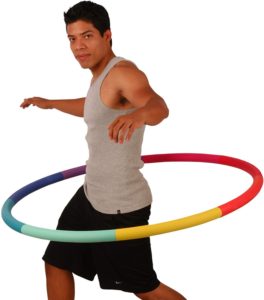 For some, the only form of exercise we need is hula hooping. It is enjoyable to do and a fantastic low impact workout. It can trim you down and get your heart pumping. However, not all hoops are created equal. They are available in different sizes, but maybe not the “right” size for your body. This is perhaps one of the biggest reasons people choose to create their own hula hoops. We are curious about how you may go about custom epoxy resin hula hoops.
For some, the only form of exercise we need is hula hooping. It is enjoyable to do and a fantastic low impact workout. It can trim you down and get your heart pumping. However, not all hoops are created equal. They are available in different sizes, but maybe not the “right” size for your body. This is perhaps one of the biggest reasons people choose to create their own hula hoops. We are curious about how you may go about custom epoxy resin hula hoops.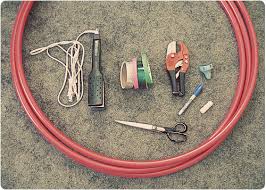 Most hula hoops are made with plastic tubing. Does this mean that you cannot have a little fun with it? Perhaps you could use a customized mold to create a hula hoop out of epoxy resin? You could possibly do it by creating a large circular mold and a
Most hula hoops are made with plastic tubing. Does this mean that you cannot have a little fun with it? Perhaps you could use a customized mold to create a hula hoop out of epoxy resin? You could possibly do it by creating a large circular mold and a  When you create a hoop with plastic tubing, you can use colored tape to decorate it. This is the fastest and easiest way to decorate. If you are using epoxy to create a hoop, you can use colors, glitter, small shells, and other similar items to fill the mold. Your hula hoop can truly become an expression of who you are. It can show the things that you feel are important to you.
When you create a hoop with plastic tubing, you can use colored tape to decorate it. This is the fastest and easiest way to decorate. If you are using epoxy to create a hoop, you can use colors, glitter, small shells, and other similar items to fill the mold. Your hula hoop can truly become an expression of who you are. It can show the things that you feel are important to you. Anytime there is an event that comes to town, everyone has to worry about how to handle all the new people that may come along with it. This is also a very common thought when planning competitions in any particular area. Marathons and hula hooping competitions may have hundreds of people following it into a town or a city. One of the first things for organizers is to find out if there are enough competition lodging options.
Anytime there is an event that comes to town, everyone has to worry about how to handle all the new people that may come along with it. This is also a very common thought when planning competitions in any particular area. Marathons and hula hooping competitions may have hundreds of people following it into a town or a city. One of the first things for organizers is to find out if there are enough competition lodging options. Competitions have a huge, sometimes massive, following. There are some hula hoopers who may camp out in tents near the event start, but not all. This is because a night of good rest could be important to their performance when it begins. In this situation, they want a nice bed and a hot bath or shower.
Competitions have a huge, sometimes massive, following. There are some hula hoopers who may camp out in tents near the event start, but not all. This is because a night of good rest could be important to their performance when it begins. In this situation, they want a nice bed and a hot bath or shower. City councils and such know that if they want to improve their town, it requires money. What better way to get money than to have a group of tourists come in, stay awhile, and go? Mayors and others want there to be a competition in or around their city. First, though, they have to figure out how to bring the people in. Not just the performers, but their family and friends. Their support group.
City councils and such know that if they want to improve their town, it requires money. What better way to get money than to have a group of tourists come in, stay awhile, and go? Mayors and others want there to be a competition in or around their city. First, though, they have to figure out how to bring the people in. Not just the performers, but their family and friends. Their support group. Hula competitions are very common. They can be hosted for all age groups. It is good exercise and lots of fun. There are also many different variations for doing it. This makes it possible to provide a broad range of prizes to people who do it well. We have done our searches and found the top prizes at hula competitions. Perhaps you could use some of these ideas for your own event?
Hula competitions are very common. They can be hosted for all age groups. It is good exercise and lots of fun. There are also many different variations for doing it. This makes it possible to provide a broad range of prizes to people who do it well. We have done our searches and found the top prizes at hula competitions. Perhaps you could use some of these ideas for your own event? There are numerous options for kid’s prizes. Small toys and trophies are always hit. They are simply excited to have something that they “earned”. For hula contests, you can even use gift bags that are filled with several small treats.
There are numerous options for kid’s prizes. Small toys and trophies are always hit. They are simply excited to have something that they “earned”. For hula contests, you can even use gift bags that are filled with several small treats. Adult prizes are a little more tricky, but still enjoyable once you find the right one. Most of these gifts require something larger than those for kids. Adults may enjoy more personalized gifts though. This may include trophies, but could also include mugs, canvas bags, and more. You may also choose to consider
Adult prizes are a little more tricky, but still enjoyable once you find the right one. Most of these gifts require something larger than those for kids. Adults may enjoy more personalized gifts though. This may include trophies, but could also include mugs, canvas bags, and more. You may also choose to consider  Remember when you were a child and your school had hula hoops? Maybe you figured out how to use them around your waist or maybe you simply enjoyed rolling them around. Either way, the amount of fun you could have with just a simple little hoop was unreal. Then, perhaps you grew up. Those hoops were forgotten until that magical day when your child wants a hoop. What you may not realize is that being grown doesn’t mean that we have to forget the hoop. It can be just as fun for adults as it is for kids. It also provides you with an outstanding exercise option that is guaranteed to make you WANT to do it.
Remember when you were a child and your school had hula hoops? Maybe you figured out how to use them around your waist or maybe you simply enjoyed rolling them around. Either way, the amount of fun you could have with just a simple little hoop was unreal. Then, perhaps you grew up. Those hoops were forgotten until that magical day when your child wants a hoop. What you may not realize is that being grown doesn’t mean that we have to forget the hoop. It can be just as fun for adults as it is for kids. It also provides you with an outstanding exercise option that is guaranteed to make you WANT to do it. Most people feel that the hula hoop was invented in the 1950s. This is not 100% accurate, though the hoops we see now are a result of their change in the 50s.
Most people feel that the hula hoop was invented in the 1950s. This is not 100% accurate, though the hoops we see now are a result of their change in the 50s.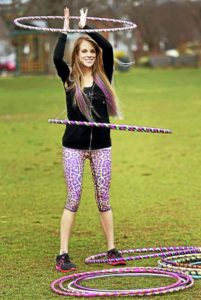 When you pick up a hoop, your body will thank you for it. There are many benefits to twisting your hips to keep the hoop up. These benefits include:
When you pick up a hoop, your body will thank you for it. There are many benefits to twisting your hips to keep the hoop up. These benefits include: